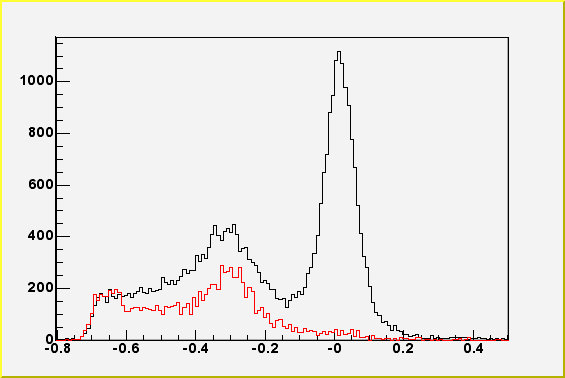People,
After I sent out a neutron asymmetry, there was a discussion between
Mike and me (a.k.a "GeN working group") about how good my cut on
quesi-elastic peak of an electron was. That is to say that since we do
not have neutron time-of-fligh information how do I know that there are
neutrons inside of my quasi-elastic peak and not something else, for
example gammas. I kind of waved my hands at it saying that I think that
the cut is good but I could not quatify it. Luckily we have hydrogen
data now, which can help to resolve this issue.
I inclose a plot of "Q^2/(2Mn)-omega" for deuterium (black line) and
hydrogen (red). The cut is 0.15 GeV around zero. The plots are
normalized to charge and conductance difference (difference in mass).
The plots were NOT normalized to average temperature ( deuterium was run
at slightly colder cell temperature). The data in both plots are what
survived the cut on trigger type 2 and cerenkov on the electron side.
Deuterium data clearly shows quasi-elastic peak. If my quasi-elastic
peak was dominated by gammas and garbage it would show up in the
hydrogen plot. However, one can clearly see that almost all hydrogen
events are missing in the region of a quasi-elastic peak. The signal to
noise is something like 20:1 (or 5%). So it seems that I indeed have
all neutrons in my cut and what is surprising is how relatively clean
our "neutron trigger is".
The 5% background is not all due to gammas/garbage. Some of it is due
to small but finite tof detection inefficiency and small part of an Ohio
wall not covered by tofs.
I hope this helps our discussion. I look forward to getting neutron TOF
information since this is the only way to maximize asymmetry.
Best
regards, Vitaliy

This archive was generated by hypermail 2.1.2 : Mon Feb 24 2014 - 14:07:30 EST